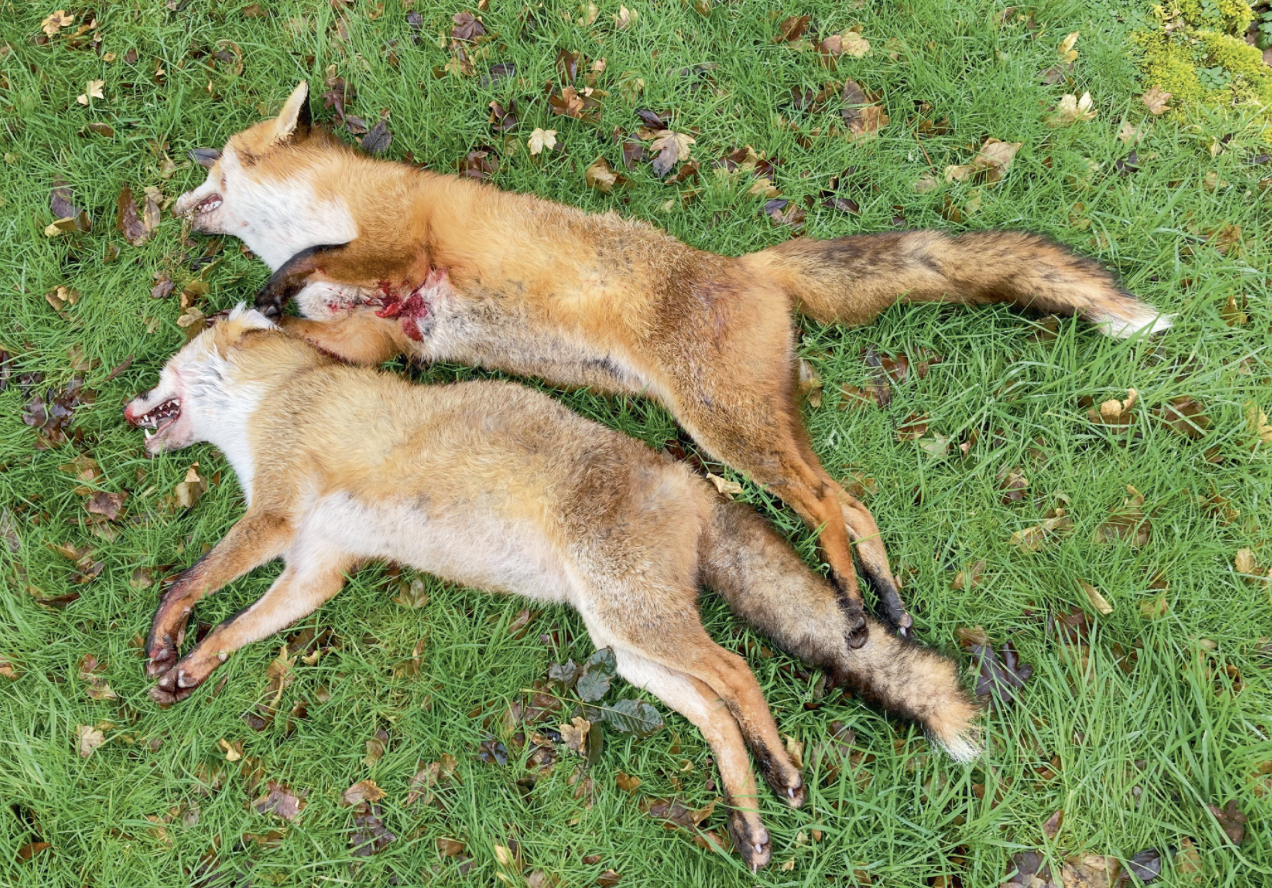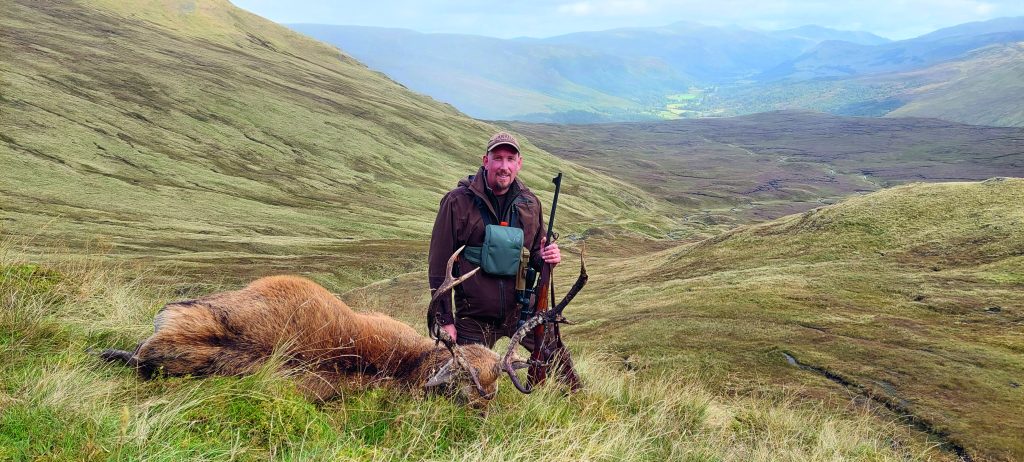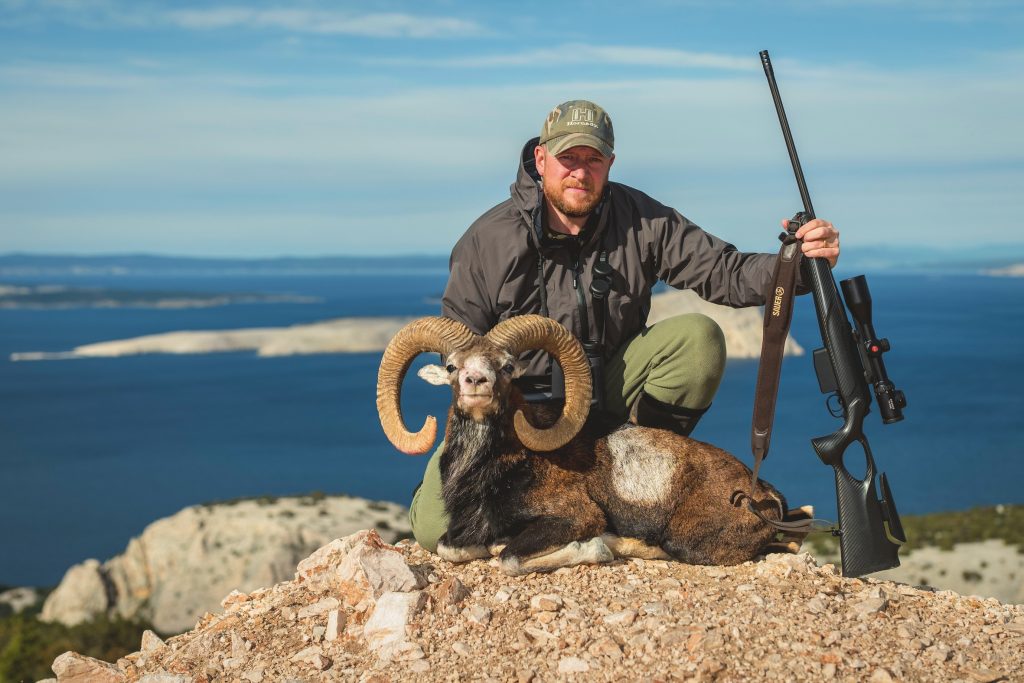Foxes and flu
Mike Powell has a couple of successful outings protecting lambs and chickens, but his efforts are overshadowed by disaster on a neighbouring farm

The Challenge of Rising Fox Numbers
This year my fox-control focus has been on protecting poultry rather than lambs. I had two poultry enterprises near me in the village, both of which have seen more fox predation than I can remember. This is almost certainly linked to the fact that there are more foxes in the area than I can remember.
Perhaps the reason for this is my location. My village contains the only major concentration of poultry for miles around, and much of that surrounding area has always been home to a fair number of foxes. Added to this is the fact that I am just about the only person doing any serious fox control. Furthermore, since the RSPB stopped any shooting on the cliff land that is only half a mile from my home, fox numbers have risen considerably.
When Foxes Turn to Lamb Predation
As we moved into February, the first definite report of a fox taking a lamb came when a ewe had twins at midday. Half an hour later there was only one, with a blood trail leading through a well-used fox run through a hedge and onto some adjoining land. Although few foxes actually take live lambs, once one realises it can, more deaths almost always follow. Last year I shot a well-known vixen that had taken several lambs over a couple of years, and I suspect that this current troublemaker could well have learned its craft from its mother.
Strategic Positioning for Evening Fox Control
Knowing the land well, I identified a spot where I could park the Hilux, which not only gave me an excellent view up the whole valley but was also a location where I knew foxes tended to travel. The evening after the lamb was taken I parked up just before dark and settled down to wait. The nights were getting lighter, so it was about six before darkness closed in.
A Successful Evening’s Work
I had only been in position for half an hour when a fox appeared, coming down the hillside towards me. When I first spotted it, it was about 200 yards away. Knowing that it would most likely follow the hedgeline to the bottom of the valley, I waited. Eventually it reached the valley bottom.
Something I have learned about this spot is that there is an almost 45° drop to the valley bottom that has to be taken into consideration when taking aim. I sent the 75gr V-Max on its way from the Sako .243 A2 and the fox was down.
Multiple Targets in Quick Succession
Only a few minutes later the Habroks picked up another fox some 400 yards away at the top of the valley. Like so many others over the years, this one started wending its way down towards the ewes and lambs. Its progress was slow as it was constantly stopping to pick up some titbits in the grass. Eventually I lost sight of it.
I was certain it was still moving towards me but hidden by the various hedges that criss-crossed the valley. Sure enough, it finally showed up in almost the same spot as the first fox. This second one was far more direct in its approach, and before long the Habroks’ rangefinder showed it to be 130 yards away on the hillside, almost opposite where I was parked.
As it was level with me, there was no need for any adjustment. The shot was taken and number two was down and out. Feeling well pleased with the evening so far I decided to give it a bit longer. Over the next half an hour or so, three more foxes were spotted, none of them close enough for a shot.
The Third Success
I was thinking of calling it a night but decided to give the valley one more sweep with the thermals. To my surprise there was yet another fox directly in front of me, coming down the hillside almost exactly where the earlier two had been. I knew the range as it paused to sniff the second one I had shot. Again the Sako did its bit and the third fox was dealt with. All in all, a highly satisfactory evening’s work.
Poultry Farm Protection
The next night I decided to visit the free-range poultry farm a couple of hundred yards from my home. I have little idea of the number of foxes I have removed from this farm of some 35 acres over the last 25 years, but it must run into hundreds, and still they come. I sat there in my usual spot, watching five roe deer and 30 or 40 rabbits through the Habroks, and thought of the hundreds of hours I had waited in this spot over the years.
Night Vision Equipment for Poultry Protection
As was usually the case on this farm, I soon spotted a fox that appeared from nowhere. It was about to pick up a chicken that had flown over the electric fencing but had forgotten how to get back and settled down in the grass for the night. Not a good idea.
On this occasion I was using the .204, on which was mounted one of the Hik Alpex 4K day/night scopes. I was using Hornady 40gr V-Max, which I find almost as good as my home-load 39gr Blitzkings. The range was 151 yards. The shot was taken and the fox dropped before it actually caught the chicken. Shortly after, I called it a night, collected the fox, and also managed to catch the bird and put it back in the run.
The Avian Flu Disaster
Next morning at around midday the phone rang. It was Jerry, the owner of the poultry farm, with the devastating news that they had found several dead birds when they had let them out that morning. He had informed the Ministry, which was on its way to test for avian flu. Later that day it was confirmed, and the whole enterprise had to be shut down.
The Impact on Local Farming
This organic poultry farm had been running successfully for 15 years, but at a stroke this devastating disease has destroyed all the hard work and effort needed to run the business. Today as I write this article, the Ministry team has arrived to kill the 5,000 birds. It’s a very sad day, not only for the owners of the farm but also for the workers and us local villagers who have supported the enterprise.
Who knows what the future holds for my friends on the farm? I imagine that for many reasons this will be the end of the poultry enterprise for good. We are located on the coast, and although I have no knowledge of what brought the disease, I suspect that seabirds could well be the culprits as they are always around the poultry. Also I would think that having been through the trauma this sort of event brings, the owners would forever be waiting for the next time.
Continuing Fox Control After the Outbreak
So for one reason and another, this has not been a good month, but spring is on the way and hopefully will herald both better weather and times to come. A week has now passed and I have a licence to be back on the farm. My first visit after the outbreak was quite an eerie experience, as there were no sounds of chickens and everything felt wrong.
I have shot over this farm, which is no more than a 100 yards from my home, for over 40 years, and it has never felt like this. I shot a fox, but it did seem rather pointless as there were no chickens there. There are numerous rats to deal with, but for me and many others it will never be the same.
Key Takeaways for Fox Control
Essential Equipment for Effective Fox Control
- Thermal imaging devices (Habroks with rangefinder capability)
- Quality rifles (.243 A2 for longer range, .204 for precision work)
- Appropriate ammunition (75gr V-Max for .243, 40gr V-Max for .204)
- Day/night scopes (Hik Alpex 4K recommended)
- Strategic positioning with clear valley views
Understanding Fox Behaviour
- Foxes follow predictable routes along hedgelines
- They become bolder when targeting easy prey like poultry
- Once a fox learns to take lambs, repeat offenses are likely
- Multiple foxes often work the same territory
Farm Management Considerations
- Regular fox control is essential for poultry protection
- Avian flu can devastate established farms overnight
- Coastal locations may face additional disease risks from seabirds
- Long-term pest control relationships are valuable for farmers
This experience highlights the dual challenges facing modern farmers: traditional predation pressure from foxes and the ever-present threat of disease outbreaks that can destroy decades of work in days. Effective fox control remains a crucial component of livestock and poultry protection, even when faced with larger systemic challenges.
For more information on fox control techniques and equipment reviews, continue following our pest control series.
Related Articles
Get the latest news delivered direct to your door
Subscribe to Rifle Shooter
Elevate your shooting experience with a subscription to Rifle Shooter magazine, the UK’s premier publication for dedicated rifle enthusiasts.
Whether you’re a seasoned shot or new to the sport, Rifle Shooter delivers expert insights, in-depth gear reviews and invaluable techniques to enhance your skills. Each bi-monthly issue brings you the latest in deer stalking, foxing, long-range shooting, and international hunting adventures, all crafted by leading experts from Britain and around the world.
By subscribing, you’ll not only save on the retail price but also gain exclusive access to £2 million Public Liability Insurance, covering recreational and professional use of shotguns, rifles, and airguns.
Don’t miss out on the opportunity to join a community of passionate shooters and stay at the forefront of rifle technology and technique.




